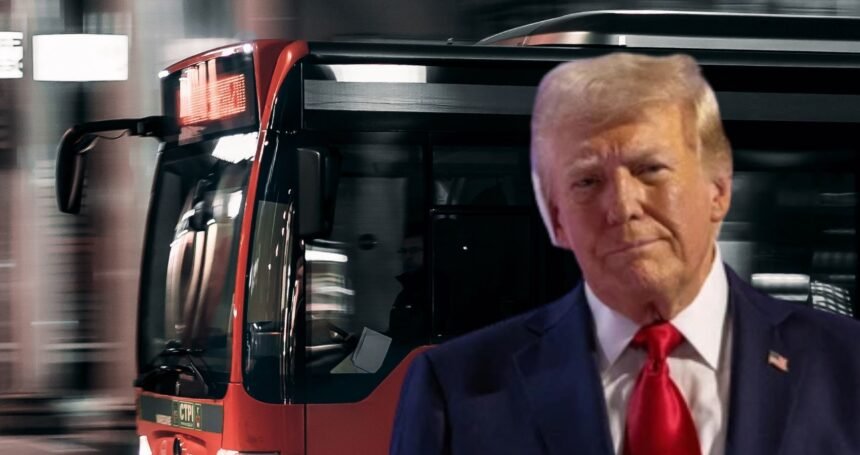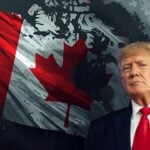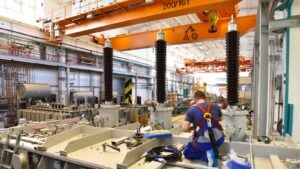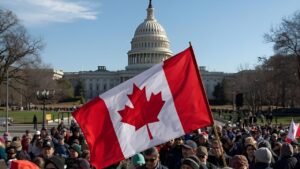Donald Trump, the President of the United States, has put a 10% tax on buses that come from other countries.
This will raise the cost of replacing fleets across North America just as agencies are getting ready to offer more service and switch to electric vehicles.
The president signed the measure into law on October 17 under Section 232 of the Trade Expansion Act. This law also put a 25% tax on certain parts and medium and heavy duty trucks that are brought into the country.
The White House said it was a national security measure to boost domestic vehicle production, and the bus tariff only applied to vehicles classified under HTSUS heading 8702.
The declaration is now in effect, and Customs and Border Protection is telling people how to report the new fee.
The agency also made it clear that buses that have to pay the 10% duty do not also have to pay the administration’s separate reciprocal tariffs on imports.
This stops double counting, but cities still have to deal with higher upfront bills and tighter tender math as orders go through customs.
A lot of buyers used this year’s federal bus funding round to make purchases that will be delivered through 2026.
Higher costs of getting things to the ground can mean changing the scope of a project, putting off upgrades to a depot, or moving purchases from battery-powered to lower spec models.
The Federal Transit Administration has already admitted that some parts of the supply chain are tight. Late last year, they suggested a temporary Buy America waiver for battery electric minibuses because there weren’t enough compliant vehicles available.
This gap makes it more likely that buyers will go abroad when there aren’t enough slots in the US, which is where the new tariff comes into play.
Canadian agencies don’t have to pay U.S. duties directly, but the effects almost always go beyond the border.
The production of buses in North America is very interconnected, with suppliers, battery packs, and drivetrains crossing the 49th parallel.
If U.S. assembly takes in more parts to avoid the tariff, Canadian buyers may have to wait longer or pay more for the same parts.
Ottawa has already been changing its policy mix because of trade problems and industrial goals. Carney has put the EV mandate on hold while Canada balances trade, jobs, and tariffs this fall.
The provinces are also keeping an eye on what happens next. Earlier this year, Canada announced a $1 billion tariff relief program for small businesses in British Columbia.
A lot of city contracts set prices at the time of the award, but extras, change orders, and options are often priced based on current cost curves.
The tariff can go through if an agency chooses an option next quarter for units that come from outside the country.
Even if the final assembly is done in North America to follow content rules, imported sub-assemblies and parts can still raise prices.
This pressure comes at the same time that systems are trying to grow their services in big ways, like Metro Vancouver’s plan to add more bus hours and improve BRT corridors, and agencies from Toronto to Regina are pushing harder to get zero-emission fleets.
If tariffs shift demand toward compliant assembly lines, builders in the U.S. with a lot of domestic content could get more orders at the margin.
Under the new rules, Canadian companies that sell goods in the U.S. may need to change their production footprints or prices to stay competitive.
The real test of the tariff will come in 2026 and 2027 delivery schedules, when this month’s policy change becomes next year’s bill.




















